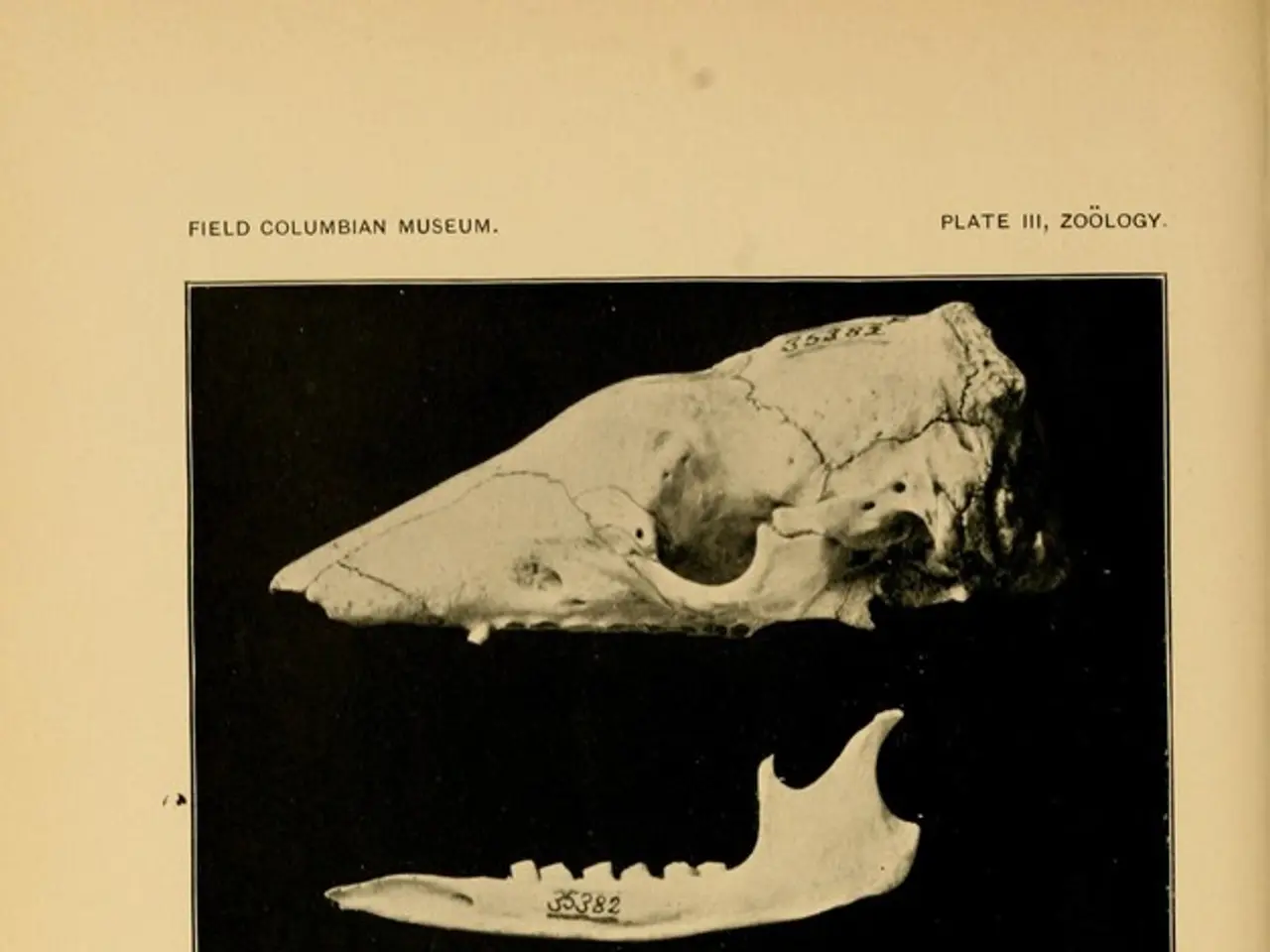Is there a genetic predisposition to developing bone cancer?
Bone Cancer: Understanding the Genetic Risks and Treatment Options
Bone cancer is a rare type of cancer that affects the skeletal system. While it is not common, understanding the risks and treatment options is crucial for those who may be at a higher risk.
Several genetic conditions can increase a person's risk of developing bone cancer. These conditions involve mutations in specific genes, such as TP53 (associated with Li-Fraumeni syndrome) and the RB1 gene (linked to hereditary retinoblastoma).
Li-Fraumeni syndrome is a rare inherited disorder that significantly increases the risk of various cancers, including osteosarcoma, a common type of bone cancer. On the other hand, hereditary retinoblastoma, a childhood eye cancer, is strongly associated with an increased lifetime risk of bone tumors.
Other inherited syndromes related to bone cancer risk include Rothmund-Thomson syndrome, characterized by defects in DNA repair, and Multiple Exostoses, which causes abnormal bone growths that may develop into bone malignancies during growth spurts.
In addition, inherited bone marrow failure syndromes (IBMFS), such as Fanconi anemia, caused by mutations in DNA repair genes, may increase cancer risk, including bone marrow and possibly solid tumors.
While these inherited gene mutations predispose individuals to bone cancer, environmental factors like prior radiation therapy during childhood can also interact with genetic vulnerabilities, increasing overall risk.
When it comes to treatment, the type, size, location, and stage of the cancer, as well as a person's age and general health, play a significant role. Surgery is a common treatment option, with the aim of removing the tumor. Chemotherapy is often an integral part of treatment for Ewing sarcoma and osteosarcoma. Targeted therapy, which specifically targets certain gene changes inside cells to treat cancer, also plays a role in bone cancers where chemotherapy is not effective.
A doctor may perform a biopsy to confirm a diagnosis of bone cancer. Symptoms of bone cancer include pain, bone fractures, lumps or swelling, weight loss, fatigue, numbness and tingling. X-rays, MRIs, and bone scans may be used for further investigation of suspicious areas.
In summary, understanding the genetic risks associated with bone cancer can help in early diagnosis and risk-based screening for families with inherited mutations. Some types of bone cancer can be hereditary, and knowing this information can be crucial for those at a higher risk.
| Syndrome / Condition | Gene(s) Involved | Cancer Risk Notes | |-----------------------------|--------------------|-----------------------------------------------| | Li-Fraumeni syndrome | TP53 | Broad cancer spectrum including osteosarcoma | | Hereditary retinoblastoma | RB1 | Eye cancer and increased bone tumor risk | | Rothmund-Thomson syndrome | RECQL4 (common) | DNA repair defect with bone cancer risk | | Multiple Exostoses | EXT1, EXT2 genes | Benign bone growths that may become cancerous | | Fanconi anemia (bone marrow failure syndrome) | Various DNA repair genes | Increased risk of leukemia and solid tumors |
- The TP53 gene, associated with Li-Fraumeni syndrome, poses a significant risk for various cancers, including osteosarcoma.
- Hereditary retinoblastoma, linked to the RB1 gene, not only increases the risk of eye cancer, but also elevates the lifetime risk of bone tumors.
- Li-Fraumeni syndrome is a rare inherited disorder that boosts the risk of a broad spectrum of cancers.
- Osteosarcoma, a common type of bone cancer, is one of the cancers associated with Li-Fraumeni syndrome.
- Hereditary retinoblastoma is a childhood eye cancer linked to an increased risk of bone tumors.
- Understanding the risks of bone cancer can lead to early diagnosis and risk-based screening for families with inherited mutations.
- Rothmund-Thomson syndrome, characterized by defects in DNA repair, may also increase the risk of bone cancer.
- Multiple Exostoses, which causes abnormal bone growths, may develop into bone malignancies during growth spurts.
- Some inherited bone marrow failure syndromes, like Fanconi anemia, can increase the risk of bone marrow and potentially solid tumors.
- Fanconi anemia is caused by mutations in multiple DNA repair genes.
- Prior radiation therapy during childhood can interact with genetic vulnerabilities, increasing the overall risk of bone cancer.
- Surgery is a common treatment option for bone cancer, with the aim of removing the tumor.
- Chemotherapy is often an integral part of treatment for Ewing sarcoma and osteosarcoma.
- Targeted therapy plays a role in bone cancers where chemotherapy is not effective.
- A doctor may perform a biopsy to confirm a diagnosis of bone cancer.
- Symptoms of bone cancer include pain, bone fractures, lumps or swelling, weight loss, fatigue, numbness, and tingling.
- X-rays, MRIs, and bone scans may be used for further investigation of suspicious areas.
- In the realm of medical-conditions and chronic diseases, bone cancer is a rare but critical focus.
- Science, particularly in the field of oncology, works tirelessly to uncover the complexities of cancer and develop effective therapies.
- The scientific community is always striving to understand the genetics of cancer, notably bone cancer.
- In the world of health-and-wellness, it's important to be aware of cancer risks and treatment options, particularly for rare cancers like bone cancer.
- Fitness-and-exercise plays a crucial role in maintaining overall health, reducing the risk of various medical-conditions including chronic diseases.
- Climate change is a pressing issue, but it's also essential to consider its potential impact on various industries, including manufacturing and energy.
- Mental-health is an often overlooked aspect of health-and-wellness, but it's just as vital as physical health.
- Skin-care is a crucial part of maintaining good health, as skin conditions can signal underlying health issues.
- Therapies-and-treatments for cancer have come a long way, with advancements in targeted therapies and immunotherapy.
- Cardiovascular-health is a key indicator of overall health, and maintaining it is vital for longevity and wellness.
- In the industry of finance, understanding medical risks and costs is important for wealth management and personal-finance planning.
- The rise of fintech has made it easier for individuals to manage their savings, budgeting, and investments.
- In the realm of real-estate, understanding the housing-market and investing trends can help entrepreneurs in small-business ventures.








